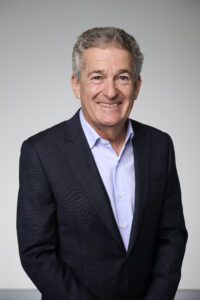An Australian first biobank to support research into gene therapies that could permanently cure certain types of hearing loss will be based in WA.
The Aussie Ear Bank is expected to be operational by the end of 2025 at the QEII Medical Centre in Nedlands.
The biobank, run by Ear Science Institute Australia, will store tissue related to genetic-associated hearing loss with the goal of advancing personalised care and new treatments.
The overall goal is to develop gene therapies to cure genetic hearing loss.
Ear Science founder and WA surgeon Professor Marcus Atlas said traditional causes of hearing loss, noise and age, were not the complete picture.
“The emerging research around the world and particularly at Ear Science is that genetics is the big new factor in middle age and older people’s hearing loss,” he said.
“This is not what we thought before and it is a game-changing finding because it (hearing loss) is potentially treatable.”

The biobank announcement follows the first-of-its-kind cure of a profoundly deaf 11-year-old boy in Philadelphia early last year who was born with a defective otoferlin gene.
He received a small dose of gene therapy containing a normal otoferlin gene directly into one ear. Four months later, he was able to hear his father’s voice and scissors clipping his hair.
The biobank will also include a digital registry of genetic samples, audiometric hearing assessment data, electrophysiological, and genetic analyses.
Ear Science and collaborators will work to address the many causes of genetic-associated hearing loss and hold clinical trials in WA, nationally and internationally.
Head of implant innovation Dr Christo Bester said pioneering gene therapy offered hope for restoring hearing in patients with genetic hearing loss.
“It is exciting that we have a way to cure a significant subset of hearing loss, particularly in kids,” he said.
“With 155 genes linked to hearing loss and new discoveries every day, navigating this complex genetic landscape presents a monumental challenge.
“Our breakthrough therapeutics are only possible through a unique collaboration within our biobank, which connects clinicians and community members with cutting-edge diagnostic tools and genetic analysis to pinpoint viable treatments.”
Dr Bester said hearing loss caused by other factors such as physical damage would still require assisted hearing devices.
The biobank will also provide genetic counselling to those that undergo gene therapy or provide genetic samples.
Hearing loss is a major contributor to global disability and currently affects more than 1.5 billion people, with the number projected to rise to 2.5 billion people globally by 2050, according to Ear Science.
About 13% of adults aged 60 years have disabling hearing loss rising to about 60% for those aged 90 years.
Permanent hearing loss is estimated to affect up to two in every 1,000 babies born. It increases during childhood to three per 1,000 children between the ages of nine to 16 years old.


